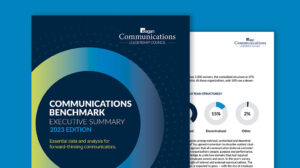3 tips for agency leaders to reengage their teams
After more than two years of business disruption, its time to reset leadership perspectives and embrace a new way of working.

Here is the fact: As business leaders, we are all up against the biggest workplace revolution many of us have seen in our entire careers. And in the agency world, we already deal with higher turnover than many other others.
It’s hardly surprising employee engagement is at a historic low, with only 36% of U.S. employees saying they are actively engaged in their work and workplace. The pandemic pushed people to their limits. Their ability to be nimble, resilient and fearless was tested.
Employees have choices like never before. Do they opt to leave behind hourlong commutes, trade burnout for new opportunities or reimagine what work looks like altogether?
Now, as organizations—and agencies in particular—start to think about what the future of work looks like in 2022 and beyond, they need to rebuild and prioritize engagement approaches that fit the needs of a new workforce.
Here are some things I’m considering and urge my fellow agency leaders to consider as well:
1. Flexibility & paid time off (PTO)
One thing is for certain, employees appreciated the ability to take control over their time. They set new boundaries and embraced the work-from-anywhere approach. The benefits of flexibility should not go away, even if they evolve.
PTO has a whole new meaning when you don’t have to leave your office four hours early to take a child to a doctor’s appointment or wait for furniture to be delivered.
Having been part of agency most of my career, I fully understand the challenges that prevent PR pros from “fully” checking out. There are always team needs, client needs and world events that change the trajectory of the best laid plans. But we cannot ask our employees to work in a state of fight or flight every day.
Burn out and challenges with mental health should be every employer’s concern. To prove your commitment to supporting employee needs, agencies must offer—and protect—meaningful time off. Instill trust in your team that you have their back and so they can feel comfortable asking for time to take care of themselves.
2. Plans for their future
Employees want to know that their work is valued and that they will be given opportunities to stretch, grow and learn.
In 2022, move beyond the state of limbo many employees have been living in and be sure your team knows there is a future for them within the organization. Fight to give promotions where they are due. Offer career growth plans that include opportunities to explore new types of work.
Instead of forcing people to look outside the organization for opportunity, create it for them through team, business function or other horizontal changes.
3. Togetherness
Culture is hard to build. It’s near impossible when teams and companies don’t see each other for months—or years.
Without requiring people to be in the office and still preserving the fluidity people are now accustomed to, leaders must find ways to create a sense of team, belonging and togetherness. As hard as it is to carve out the time for in-person or digital team get-togethers, these meetings are a necessary breath of fresh air that expands connection beyond the strictly work-focused relationship. Unexpected gifts for anniversaries, recognition of a job well done or a major personal milestone are great ways of filling the void that physical separation from your team creates.
I for one am hopeful for what the future holds. I feel the same challenges all agency (and most business) leaders are currently feeling when it comes to today’s insanely competitive talent landscape, but I also see it as a great reminder and reset opportunity.
And I look forward to being part of the human-first workplace of the future.
Annie Perkins is chief of staff and managing director, consumer & healthcare for SHIFT Communications.






